The Mullin Closed and They’re Auctioning Everything—Here are Our Favorites
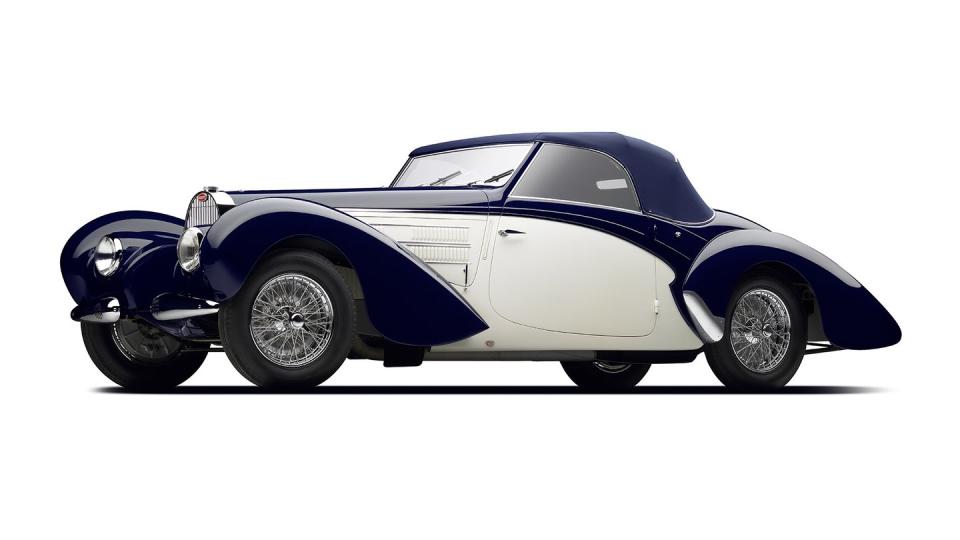
The Mullin Automotive Museum in Oxnard, California, had the greatest collection of beautiful cars ever assembled. There, I said it. And I'm not the only one who thinks that. It was known for beautiful Bugattis, Delages, and Delahayes, but there were also a few funky French cars in there, too.
It was put together by Peter and Merle Mullin, and with the untimely passing of Peter Mullin last year, much of the collection is now up for sale. Four of the Mullin Museum’s most iconic vehicles have already been donated to the Petersen Automotive Museum, of which Peter Mullin had been chairman: the 1937 Talbot-Lago T150 CS “Teardrop,” the 1938 Hispano-Suiza H6B Dubonnet Xenia, the 1939 Delahaye 165, and the 1938 Delahaye 145.
Much of the rest of the collection is now going to be auctioned off by Gooding & Co., which will drive 115 lots over the ramp April 26 at the museum. Here are our favorites.
1938 Voisin Type C30—$150,000 to $250,000
This was the last Voisin ever produced (the Biscuter, made from 1953 to 1960, though designed by Gabriel Voisin, was made by Auto Nacional, SA in Spain). The Type C30 carries many Voisin hallmarks, including the barrel-profiled hood panels, aluminum-trimmed, sharp-edged fender lines, and vertical, flat-panel dashboard. It is truly a thing of elegant beauty. The Type C30 could be had in either stylish coupe or cabriolet form. It would prove to be the marque’s final appearance at the Paris Motor Show, and indeed the last Voisin to bear the storied marque's name. In this final iteration of Voisin, the C30 received a 3.5-liter Graham-Paige engine with a centrifugal supercharger, and a Graham driveline. Imagine walking in to Pep Boys and asking for a water pump gasket for a Graham-Paige. These cars were built under license by Société des Automobiles Voisin following the closure of the Voisin factory in 1936.
While it's not exactly cheap, the expected price is well below what you could pay for some Voisins. So sell your house and register to bid. Bidding paddles are only $200 and get you and a companion in.
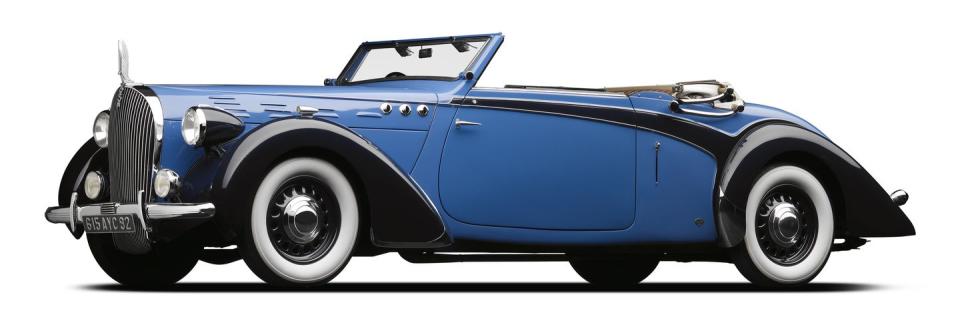
1938 Bugatti Type 57C Aravis 'Special Cabriolet'—$2.5 to $3.5 Million
The Type 57 is widely regarded as the pinnacle of Bugatti excellence. This example is one of only four Gangloff-bodied Aravis Special Cabriolets ever built. Of those, only two were built on the Supercharged Type 57C Chassis.
This one has racing provenance, having been originally sold to Bugatti works driver Maurice Trintignant and raced at the 1939 Grand Prix du Comminges, a pre-FIA Grand Prix that ran 17 miles through the Pyrenees. Trintignant finished 11th.
The Type 57 was powered by a "jewel-like" 3.3-liter twin-cam, straight-eight that represented the ultimate in automotive design at the time. The C in the car's name stands for compressor, or supercharger. It was the third version of the straight eight and made 160 hp, enough to power the cabriolet to over 100 mph. It also got magneto ignition and four-wheel hydraulic brakes, all of which made it one of the fastest and most sophisticated cars of its era. Of 710 Type 57s ever made, only 96 left the factory in supercharged 57C form. This particular 57C received an "exquisite restoration" by Bugatti specialist Sargent Metal Works, good enough that it won first in class at Pebble.
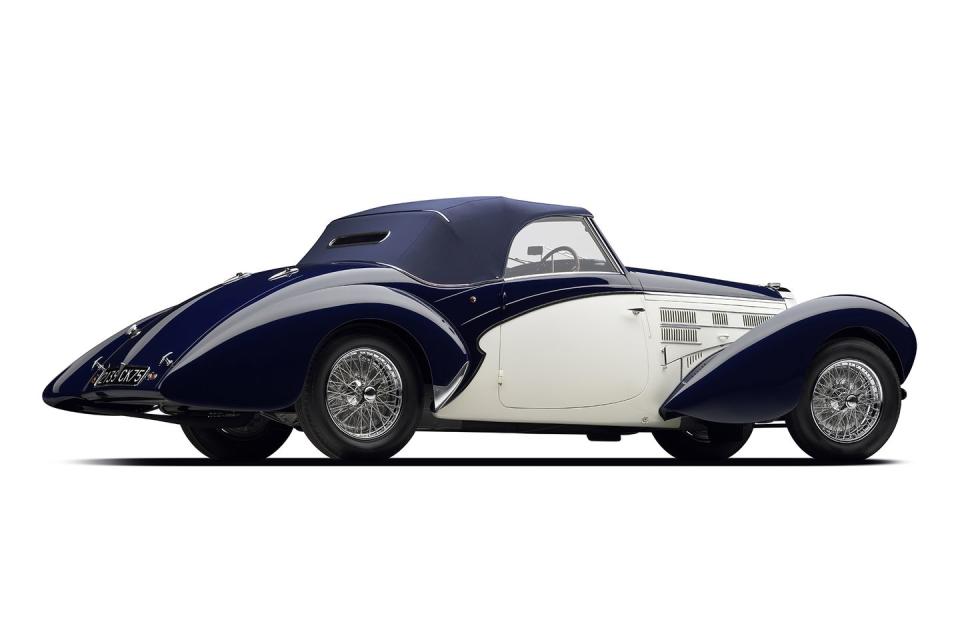
1937 Delage D8-120 Three-Position Cabriolet—$800,000 to $1 Million
Interesting fact you may not know: When Delahaye assumed control of Delage in 1935, it was decided that Delahaye would be the "sporting marque" while Delage would be positioned at the top of the luxury market. So the D8-120 you see here could be assumed to be the pinnacle of elegance in the late '30s.
The D8-120 got Delage’s impressive new 4.3-liter straight eight, "which set the standard for smooth and quiet running," Gooding notes. To be even more luxurious, the eight was mated to the the highly successful Cotal electromagnetic pre-select gearbox. "Within a short period of time, magnificent coachbuilt creations underpinned by the opulent D8-100 chassis, along with its slightly more powerful sister model, the D8-120, became the absolute queens of the French concours circuit," Gooding says. This Delage received four-seat cabriolet coachwork from Carrosserie Henri Chapron of Paris. Original sticker was 43,500 French francs.
Now here comes the interesting part of this car's history. Although its earliest ownership is unknown, after WWII, it was shipped to California, where it was sold to the RKO Studios in Hollywood and starred in the 1951 classic An American in Paris starring Gene Kelly, who was chauffeured around in the imposing Delage. RKO also used it in Kiss Tomorrow Goodbye (1950) and Carmen Jones (1954). In 1955, the car was acquired by Thol “Si” Simonson, a member of the RKO Studios production team. Peter Mullin bought it in 1987. It can be yours next, and you can get someone to drive you around like you're Gene Kelly.
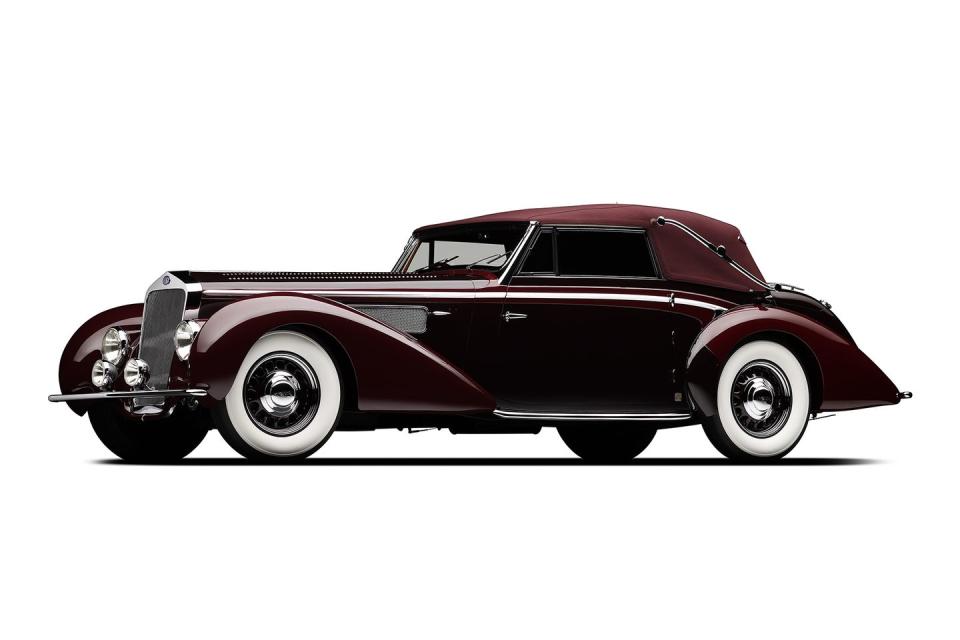
1931 Peugeot P 107 S 'Tour De France'—$4000 to $8000
While some may know that Peugeot once made bicycles, even fewer are familiar with Peugeot motorcycles. The company is actually known as Peugeot Motocycles, without the "r," and it is still in business making motorcycles. La Nouvelle Société des Cycles Peugeot had several well-received models by the early '30s. The 350-cc P 107 you see here featured the largest displacement single-cylinder engine that Peugeot made in 1931. This P 107 S was advertised as “Modèle Luxe,” and cost 4250 French francs when new. It was one of Peugeot’s most popular models at the time.
"A light and agile machine, the P 107 proved itself to be sporty and reliable and equally well suited for civilian and military use," Gooding says.
It is equipped with the then-high tech Marchal electric lights, which helped make the P 107 S a handsome machine ideal for city use and country touring. In military spec, the Peugeot P 107s were sometimes even used during the war to parachute behind enemy lines. This restored civilian model painted in military colors once formed part of a military display at the Dean Kruse Foundation in Indiana. Today, it is believed to be the only such example in the US. Imagine pulling up to The Quail Motorcycle Gathering on this.
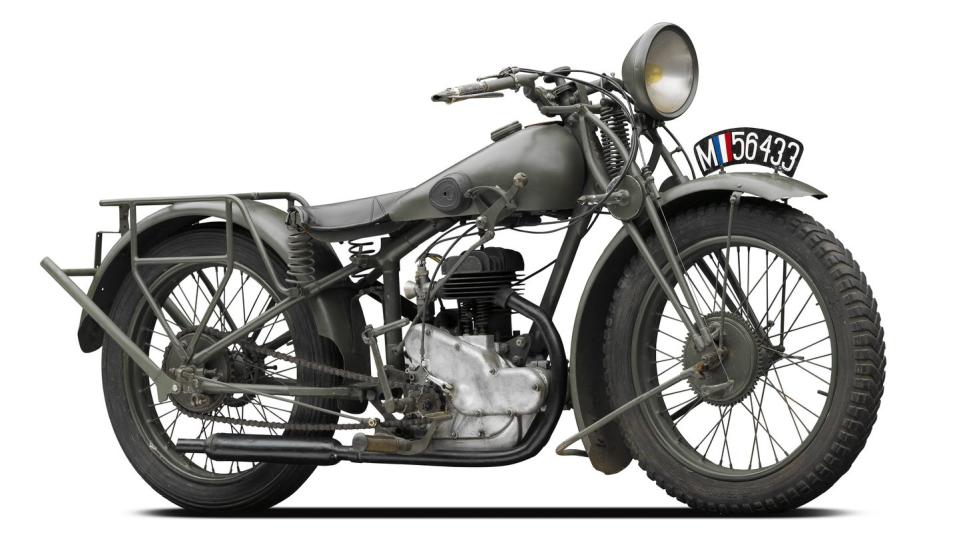
1960 Citroen ID19—$4000 to $8000
You may know the Citroen DS, the elegant French wagon that raised and lowered itself on hydropneumatic springs while looking elegant doing so. With its suave sophisticated approach to practicality, the only thing more French may have been Charles de Gaulle himself. This is the DS' less-expensive cousin, the Robespierre, if you will. This particular example is billed as a "restoration project." If you win the auction, may we suggest you take it directly to Marrs Automotive in Santa Clarita?
The DS from which the ID sprang, following on the taillights of the Traction Avant, was revolutionary for its day. Sporting a futuristic, aero-efficient body shell and fully independent self-levelling, hydropneumatic suspension, along with power brakes, clutch, and steering, the DS "was immediately successful and influential," Gooding says.
The DS debuted at the 1956 Paris Salon, and shortly thereafter the simplified ID19 version came along, at first without the interior and exterior trim of the DS and minus the comprehensive hydraulic power-assists of its sibling. Those features were gradually added to the more basic ID19 as production continued until 1969.
This particular ID19 was purchased by the Mullin Collection in 2015, with the goal of recreating the Citroën “Balloon Car,” the one featured in ads perched atop four balloons to emphasize its comfortable ride. The restoration was never done. It's not clear which mechanical parts are present. So go to the inspection day on Thursday before the Friday auction and get them to pop the hood.
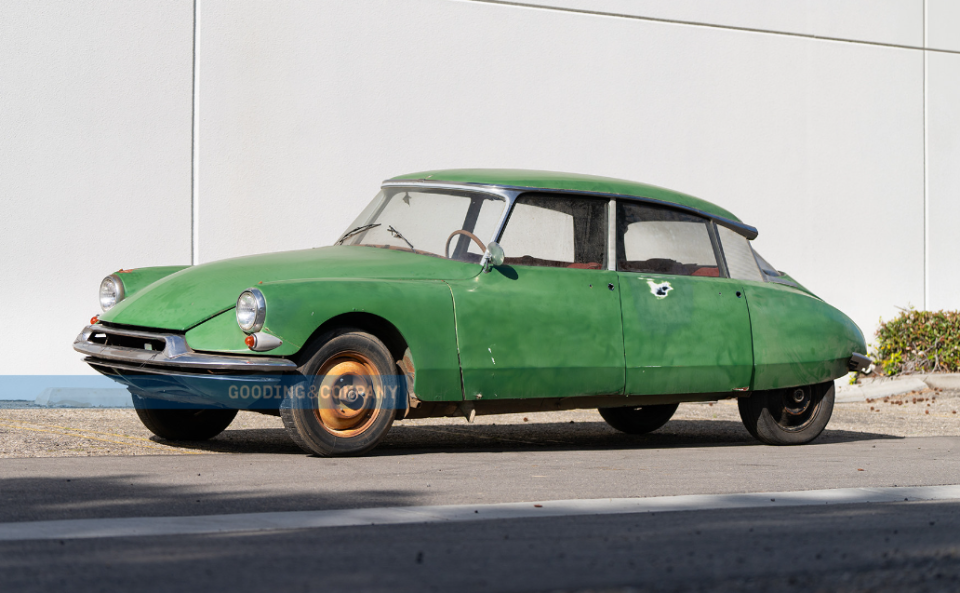
1934 Bugatti Type 57 Ventoux—$125,000 to $175,000
At the back of the Mullin Museum, behind a wall, was a row of unrestored—and unwashed—cars purchased from the Schlumpf Collection in Mulhouse, France. The Schlumpfs are an entirely 'nother story. They were wealthy brothers who amassed the largest collection of Bugattis ever assembled, only to find themselves chased away by workers from their mills into exile in Switzerland. This Type 57, and several other lots in the auction, is one of those Schlumpf Bugattis.
The Type 57 was introduced in 1934 and is widely regarded as Jean Bugatti's masterpiece. It's powered by the same "jewel-like 3.3-liter, twin-cam, straight-eight engine as the Type 57C Aravis 'Special Cabriolet' above.
According to the American Bugatti Register and Data Book, this Type 57 was delivered to its first owner, Jean Verdier, for 66,240 French francs. It made its way to the collection of John Shakespeare of Centralia, Illinois, who sold it and a number of other Bugattis to Fritz Schlumpf in 1964, where it became part of the infamous Schlumpf Reserve Collection.
Like several others, this Type 57 remained in static storage and unrestored in Malmerspach, France, until 2008 when Mullin purchased the entire collection, including this Bugatti. After acquiring the cars, the Mullin Collection kept approximately half of the Schlumpf Reserve Collection for display in the Mullin Automotive Museum, only exhibiting cars of particular historical significance. The Type 57 is one of these cars.
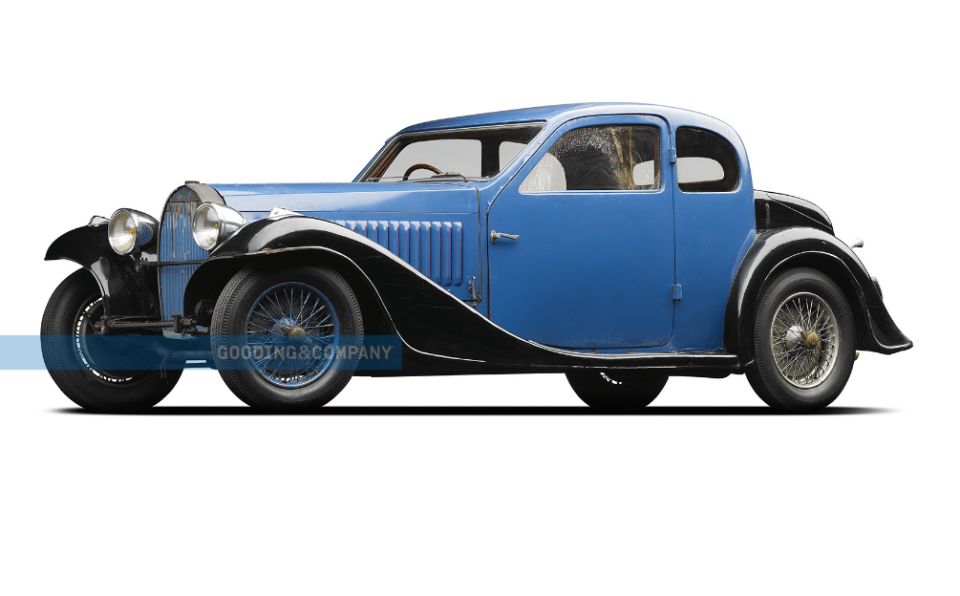
1973 Citroën HY78 Van—$30,000 to $50,000
Everybody has, at one time or another, imagined themselves buying an H van and starting a mobile crepery, flipping open the side awning and selling Crepes Suzette to delighted attendees of some sort of arts festival at which you would be a vendor. It's intriguing in the same way buying a sailboat or a race car is intriguing. You might even convince yourself it would be "profitable."
Well here's your H van!
Citroën developed and produced the first front-drive lightweight utility van prior to the outbreak of WWII in Europe. While only an estimated 2000 examples were built before the war, the TU-B inspired its postwar successor, the Type H, which debuted at the 1947 Paris Motor Show. Offered as a cab/chassis or complete body, the Type H Van was elegantly designed and immensely versatile, with form clearly following function, Gooding says. Based on a flat, load-bearing platform chassis, the proven mechanicals of the Type H Van utilized Citroën’s popular and ubiquitous Traction Avant engine, mostly in 56-hp 11CV specification with a three-speed manual transmission and front-wheel drive, plus such Citroën hallmarks as fully independent torsion-bar suspension. Vérifiez ce corrugated steel bodywork! The Type H Van had a 3300-pound payload capacity, enough for about a million crepes. The Type H was a commercial success, with 473,000 produced by the model’s retirement in 1981.
This one has already been outfitted as a mobile champagne vendor, so half your work's done for you. This HY78 from 1973 is "an engaging example of these fascinating and attractive French workhorses." Acquired by the Mullin Collection in 2015, it is accompanied by copies of prior French registration documents and a Citroën book excerpt covering the model.
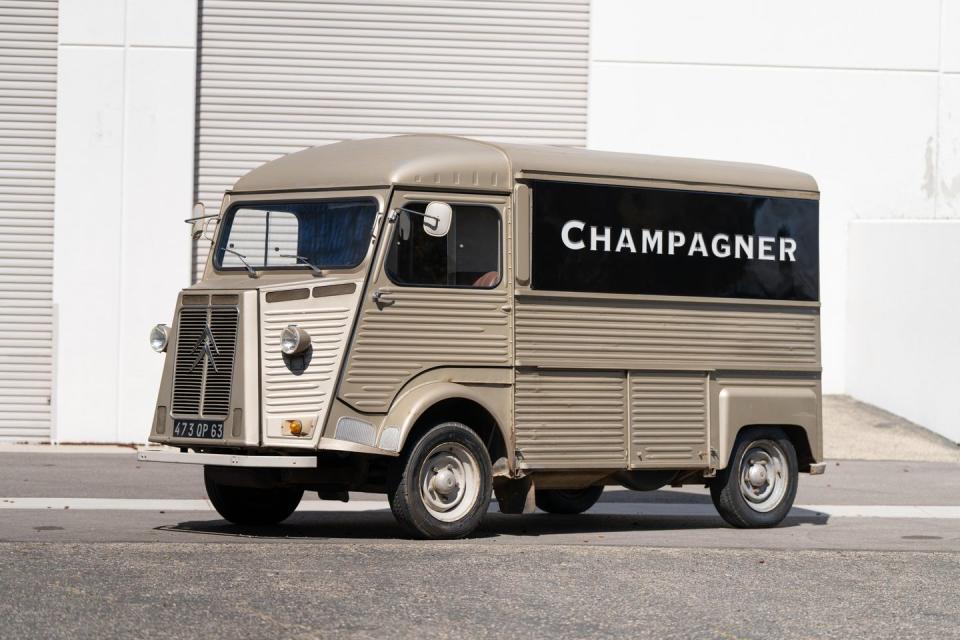

 Yahoo Autos
Yahoo Autos 